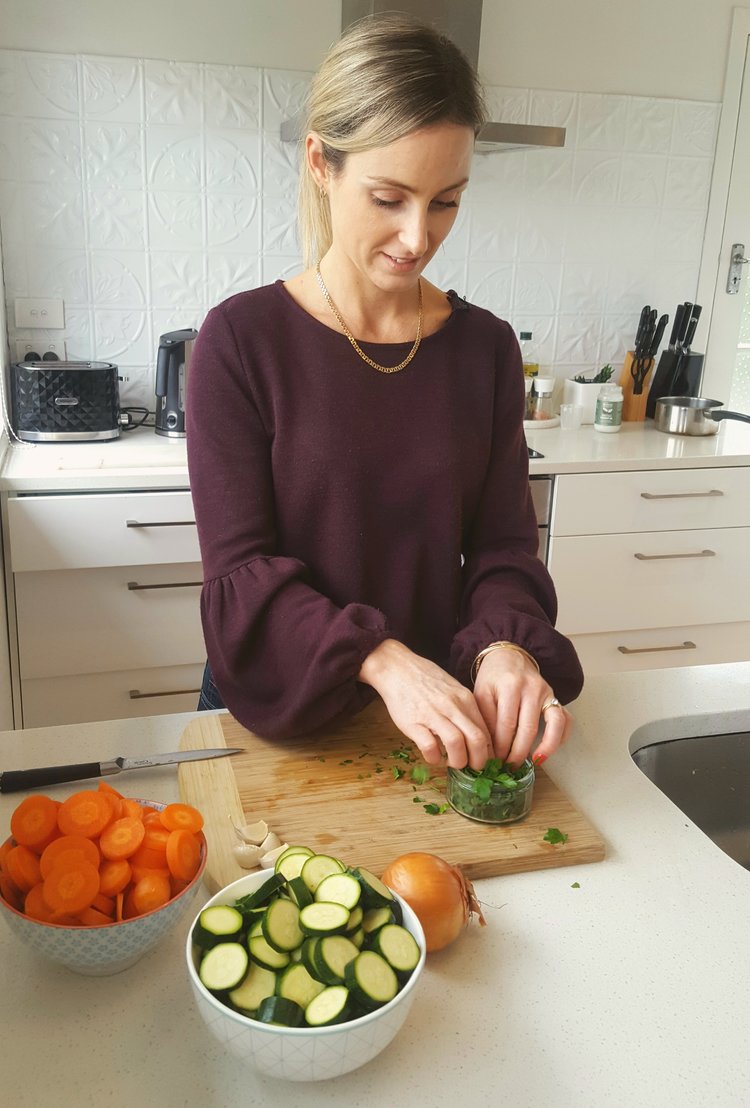Guide To: Eating Healthy On A Budget

Sometimes our best efforts to eat healthy and organic are foiled by the high cost of fresh food as it can feel like our weekly food bill takes a big slice out of our weekly budget.
Choosing to eat organically or buy high-quality foods does definitely come at an extra cost, there is no doubt about that, but with healthy eating becoming more popular within our society there are ways you can maintain a healthy lifestyle on a smaller budget.
You just need a few good tips and tricks up your sleeve. Here are my top tips for eating healthy on a budget:
- Plan your weekly meals
If you’re serious about eating healthy and on a budget, you have to plan out your weekly meals. This ensures you only eat what is actually on the menu preventing leftovers that may not get eaten and wasting food. Any food that you do end up having left over you can use either the following week. Meal planning also takes the stress out of deciding what you should have for dinner or lunch during the week (helping you make one less decision on busy long days). If meal planning is new to you, try this:– Before you go shopping check what food you already have in your fridge/pantry/freezer
– Write down food items that can be used in a meal (i.e. tinned tomatoes, whole grains, can of chickpeas, frozen meats, frozen veggies)
– Write down some meal ideas for the week (Monday – Sunday, breakfast/lunch/dinner/snacks) using those ingredients (i.e. Monday – overnight oats with nuts/seeds, yoghurt, frozen berries, Tuesday dinner – frozen leftover chicken/steak with brown rice and frozen vegetables)
– Now fill in rest of the blank spot in the planner with meals you enjoy and want to enjoy for the rest of the week. - Shop with a grocery list
Now you have your meal plan for the week sorted, write down a shopping list with all the ingredients you need to make those meals, ensure you don’t double up on ingredients i.e. buy any ingredients you already have in your home. - Shop at Farmers Markets
If you have the option to buy your fruits and vegetables at a farmers market, do it. Because they’re the source of the food and are local, they don’t have to add transportation expenses or store mark-ups. Most of what you find at the farmers’ market will be in season and there are also quite a few organic stalls at the farmers markets now which are reasonably priced, so you’ll be spending less, helping the local economy and protecting the environment. - Eat seasonally
Local seasonally produce is always cheaper than out of season produce. When produce is in season there’s plenty available locally, which is why the price on these items drops. Out of season produce often travels from afar (hello additional food milage) to get to us which adds additional cost to that produce. - Eat meat-free more often
Animal protein can take up a large portion of your grocery bill, so even if you’re not vegetarian opting for a few (or more) meat-free meals each week will make a big difference to your bill. Instead use plant-based proteins such as chickpeas, lentils, beans, they are much cheaper than meat and are high in nutrients.Try these dishes to begin:
– Lentil Spaghetti Bolognese
– Baked Eggs & Veggies
– Curried Pumpkin Soup
– Black Bean & Seed Patties
– Mexican Quinoa Bowl (slow cooker)
– Easy Zucchini Fritters - Buy whole grains in bulk
Whole grains and legumes are cheap and are nutritionally rich packed of fiber, protein, and other nutrients, all of which can help you feel fuller for longer. Try buying your grains, beans, seeds, and nuts in bulk. You can either buy these from the markets or your local grocery stores will often have a bulk section in the back where you can scoop as much as you want and pay per kilo. You’ll find that by skipping the packaging, the grains will be a lot cheaper. These kinds of foods will also stay edible for a long time, so if you hit a great sale, don’t be afraid to stock your pantry. - Cook at home
Today, people in the Western world can often eat more than 50% of their meals outside the home. It’s convenient, yes, but it contributes to the obesity epidemic (the average portion size is much bigger in restaurants), and it can be really problematic when trying to stick to a limited budget. When you put aside time each week to cook and prepare your meals at home, you tend to make and eat less food. It will also give you a chance to learn more about the foods, spices, and condiments you cook with. - Eliminate processed foods
Packaged and processed foods may seem inexpensive at first, but the lack of nutrients in these foods will cause your body to continue to crave the nourishment it needs. It is a never-ending loop that will lead to a higher expense in the end (not to mention a range of health issues in the future – poor digestion, lack of energy, poor immune system, bad skin, etc). Cut out processed foods and spend the extra money buying highly nutritious, fresh foods.Although I am all for balance, it never hurts to indulge now and then, you might want to find some healthier and less expensive substitutes for your usual snacks. Most of the treats we crave are high in refined sugar, fat, or salt and come with a lot of preservatives and packaging. Instead of buying cookies and other packaged goodies, try learning to bake your own healthy versions using whole ingredients. I personally buy 1 or 2 blocks of Lindt 70%+ chocolate each week which my husband and I enjoy throughout the week with a cup of tea after dinner. This way we have a treat to look forward to daily. I also like to make some chocolate bliss balls to snack on throughout the day if I feel I need something sweet. Get creative with homemade baking and find something you’ll enjoy.

Hi I’m Natalie, a Registered Clinical Nutritionist, health influencer, blog writer & recipe creator. My own health complications prompted me to make positive diet & lifestyle changes, revitalize my health leading to a career change from the corporate world to nutritional medicine. I believe in a wholefoods approach to good health, focusing on simple strategies for modern, busy people.
Let's connect @nataliebradynutrition
The information on this website is not intended to replace the advice of your GP, a one on one relationship with a qualified health care professional and is not intended as medical advice. It is not intended for self-diagnosis, treat, cure, or prevent any disease. I encourage you to make your own health care decisions based upon research and in partnership with a qualified healthcare professional. The entire content of this website is based on the opinions of Natalie Brady, a qualified Holistic Nutritionist, unless otherwise noted. Click here for term and conditions of services.
Copyright © Natalie Brady Nutrition 2022 | Natalie Brady Nutrition Listed in Auckland's Top Nutritionists | Website by Fuel Media



